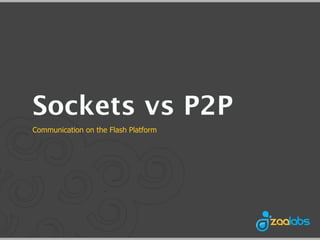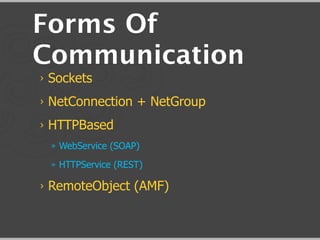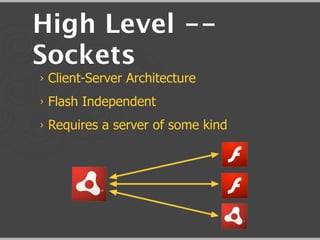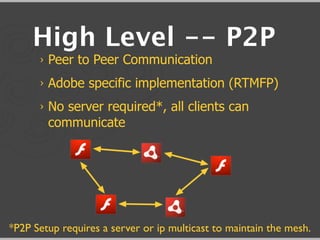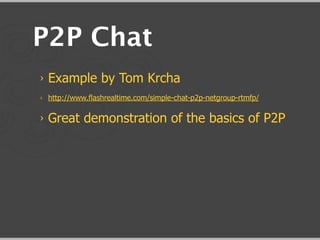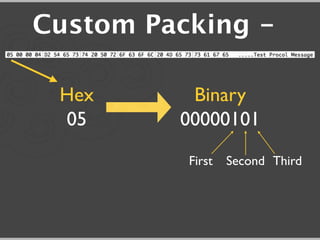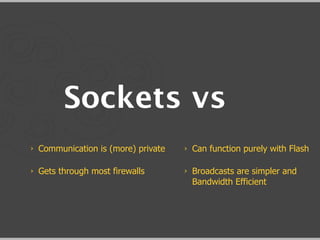P2P vs Sockets: Communication on the Flash Platform
- 1. Sockets vs P2P Communication on the Flash Platform
- 2. Aaron Boushley › Senior Developer at ZaaLabs, Ltd. › www.zaalabs.com › aaron@zaalabs.com › @boushley
- 3. Forms Of Communication › Sockets › NetConnection + NetGroup › HTTPBased » WebService (SOAP) » HTTPService (REST) › RemoteObject (AMF)
- 4. High Level -- Sockets › Client-Server Architecture › Flash Independent › Requires a server of some kind
- 5. High Level -- P2P › Peer to Peer Communication › Adobe specific implementation (RTMFP) › No server required*, all clients can communicate *P2P Setup requires a server or ip multicast to maintain the mesh.
- 6. Code Time...
- 8. War Games WOPR example by Nate Beck
- 9. P2P Chat › Example by Tom Krcha › http://www.flashrealtime.com/simple-chat-p2p-netgroup-rtmfp/ › Great demonstration of the basics of P2P
- 10. Forms Of The IP Stack
- 11. TCP vs UDP -- FIGHT! TCP UDP › Header Size: 32 Bytes › Header Size: 20 Bytes › Guaranteed Order › No Guarantee on Order › Guaranteed Delivery › No Guarantee on Delivery › Uses Triple Handshake › Single Packet › IP Header Size: IPv4 ->16 Bytes IPv6 -> 40 Bytes
- 12. Protocols › The RTMP Family (RTMP, RTMPT, RTMPS, RTMPE, RTMFP) › AMF (Socket#writeObject/readObject) › SOAP, Plain XML, JSON › Custom (Hopefully bit packed)
- 14. Custom Packing - Hex Binary 05 00000101 First Second Third
- 15. Custom Packing - Integer Hex Decimal 00 00 04 D2 1234
- 16. Custom Packing Encode Decode
- 17. Sockets vs › Communication is (more) private › Can function purely with Flash › Gets through most firewalls › Broadcasts are simpler and Bandwidth Efficient
- 18. Private Communication › Sockets send packets directly to recipient › P2P requires directing code » Example » http://www.flashrealtime.com/directed-routing- explained-flash-p2p/ › Encryption for security over the network » AS3Crypto -- https://code.google.com/p/as3crypto/
- 19. Sockets + P2P = <3
- 20. ZaaMulti
